
Issue 072
February 2011
Olympic lifting is the latest trend in MMA conditioning, inspired by Georges St Pierre. By Paul McVeigh.
Through ‘explosive triple extension’ of the hips, knees and ankles, some Olympic lifts improve explosive strength, full body coordination and neuromuscular efficiency. As we discussed last month, for fighters this means harder strikes, faster techniques and more powerful throws.
Here’s how to perform the Olympic lifts that work so well for triple extension.
First, it’s important to become proficient at the exercises below before moving on to the Olympic lifts depicted on the facing page. There’s no mean degree of technique involved in an Olympic lift and it’s important to get them right both to maximize your own safety and for optimum results.
OLYMPIC LIFTING PREPARATION EXERCISES

Clean grip front squat: Teaches the athlete the rack position for the clean.
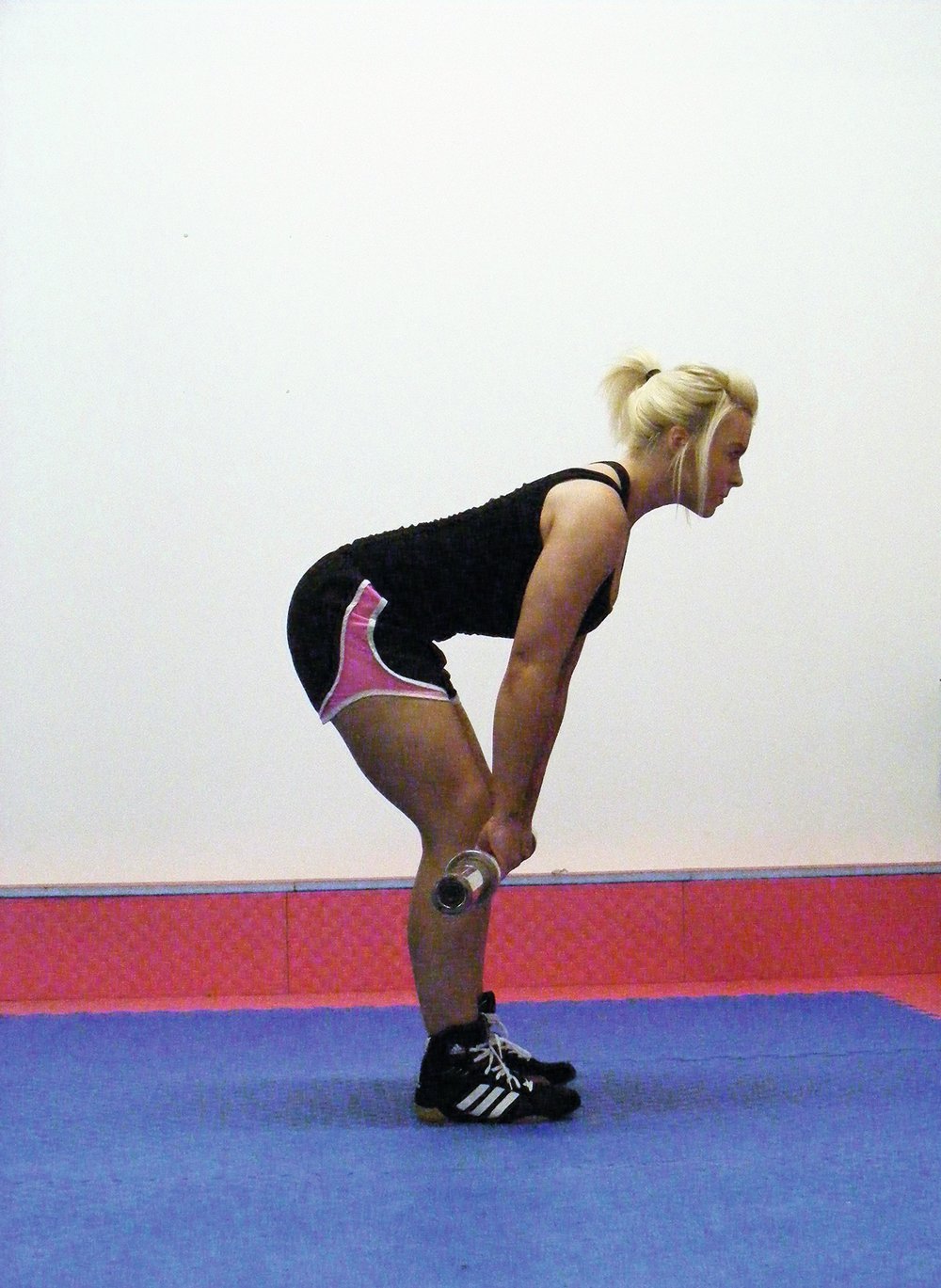
Romanian deadlift: Teaches the athlete how to flex from the trunk and generate power from the hips without compromising spinal position.
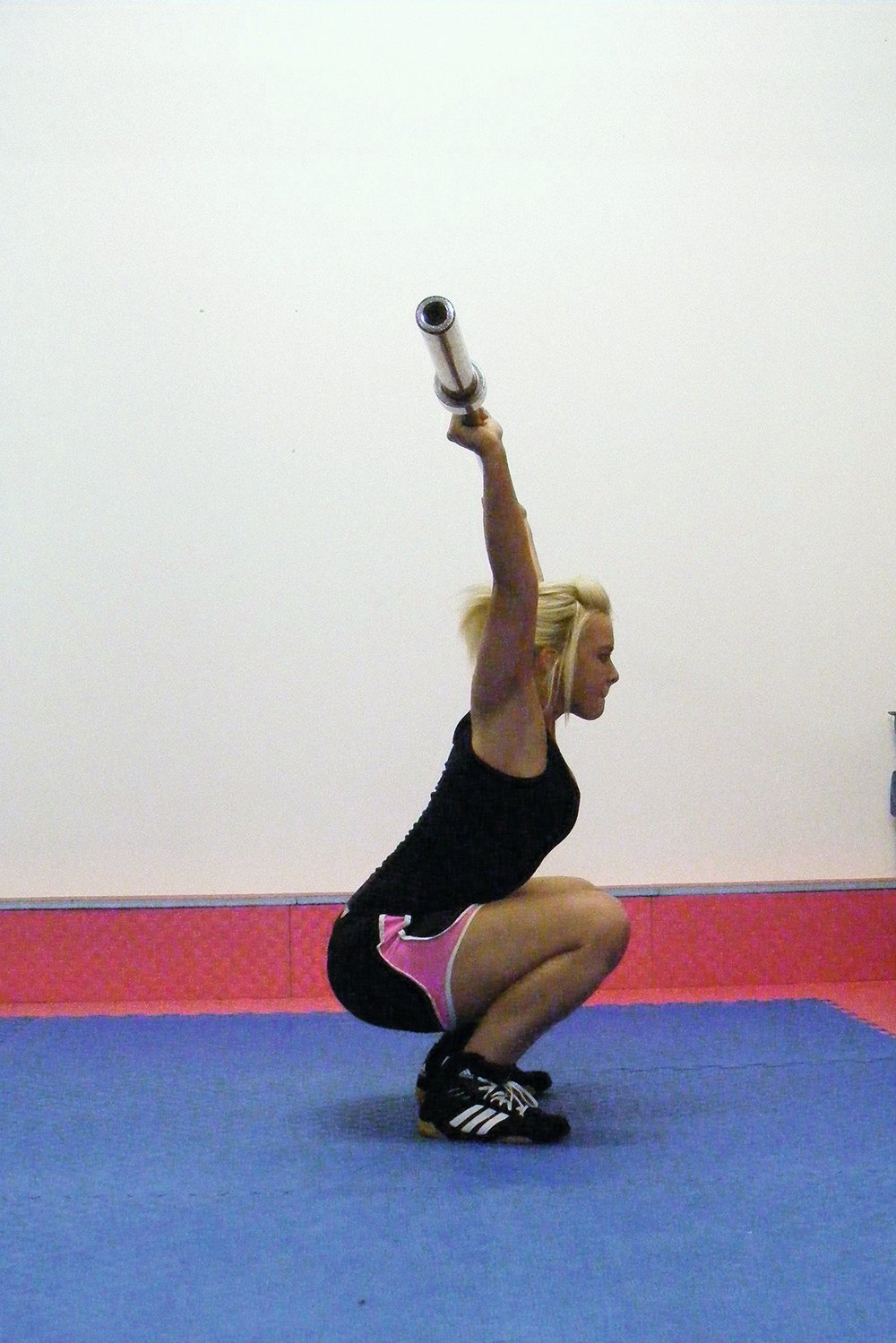
Overhead Squat: Teaches the athlete the rack position for the snatch.
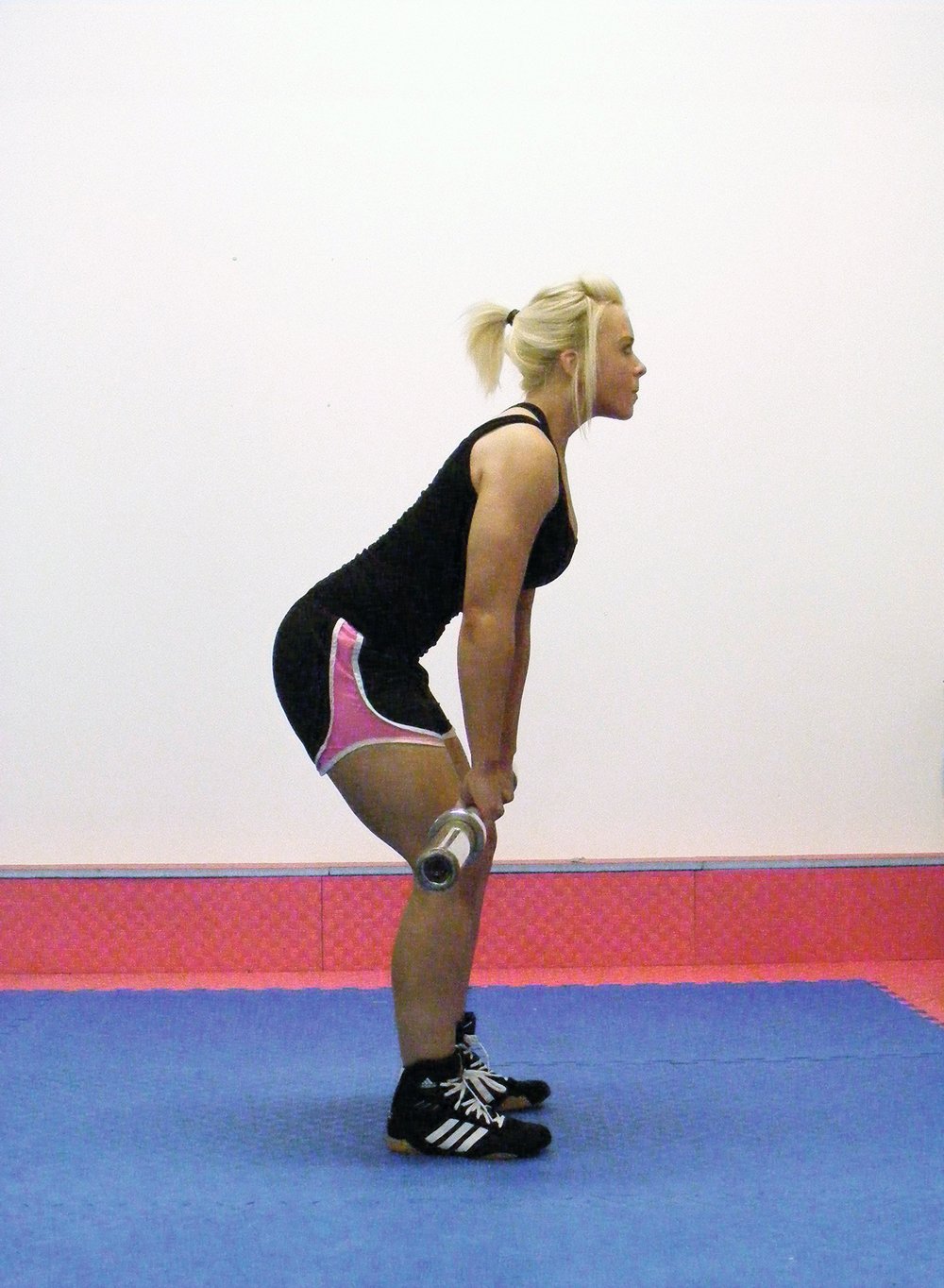
Hang position: From where you’ll execute the lifts opposite. Flex your trunk not your knees. Chest up and over the bar, wrists curled under, arms straight.
THE OLYMPIC LIFTS
The jump shrug and the high pull teach the athlete explosive triple extension without the athlete having to rack the bar. By taking a bit of the complexity out of the lifts the athlete can focus on developing bar speed.
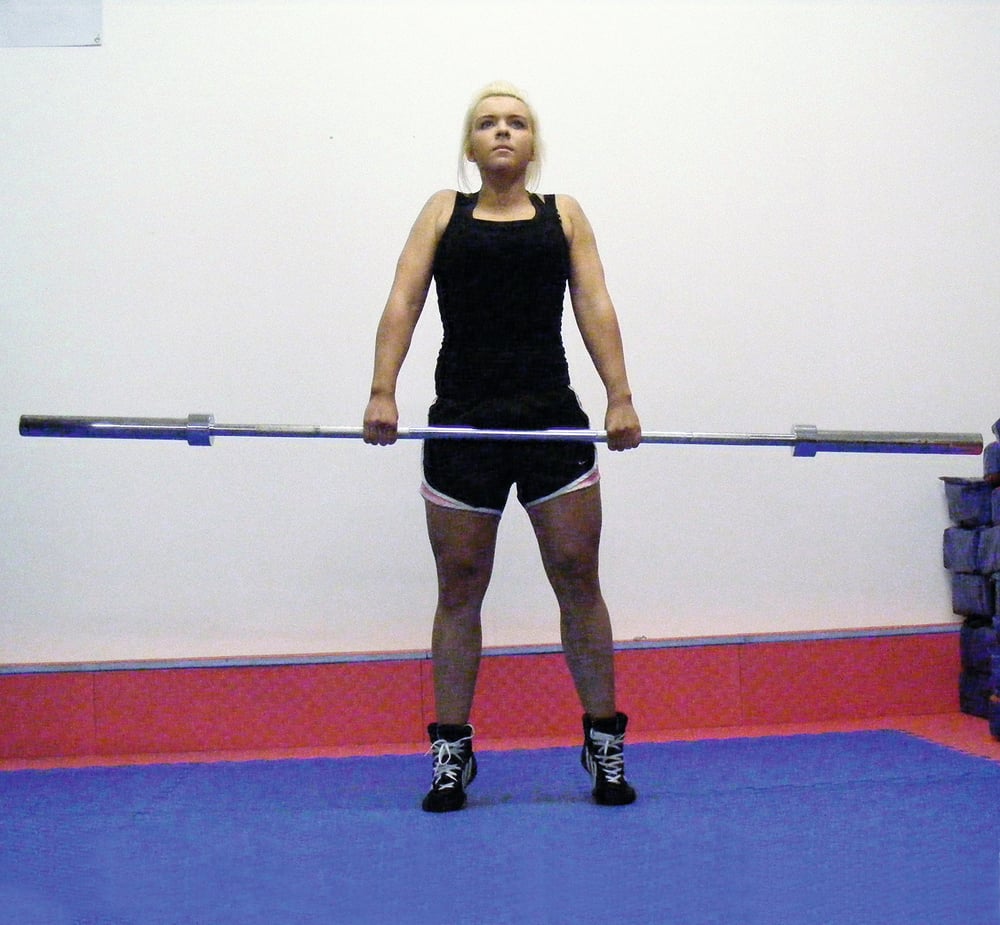
Jump shrug
From standing, slide the bar into the hang position, explosively extend the hips, knees and ankles, pull shoulders to your ears, keep arms relaxed.
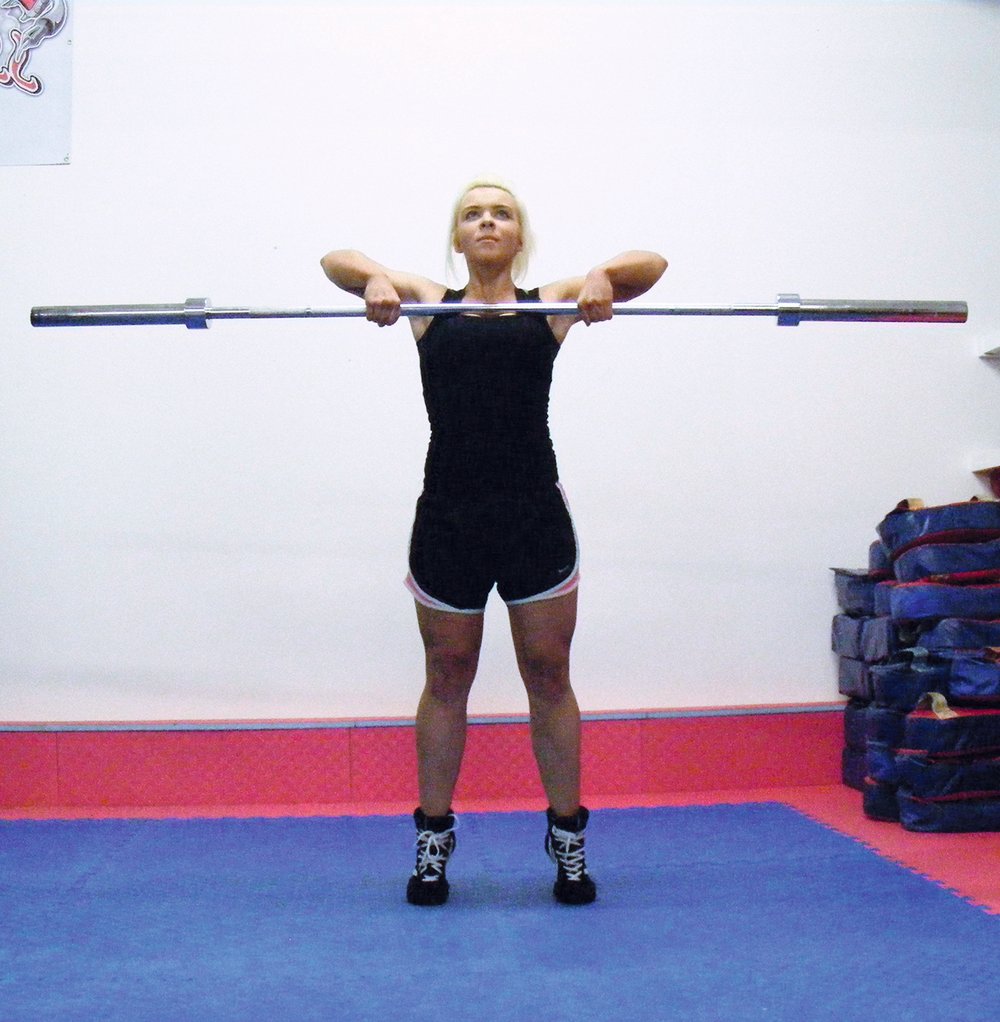
High pull
As jump shrug but pull your elbows high, keeping the bar close to your body.
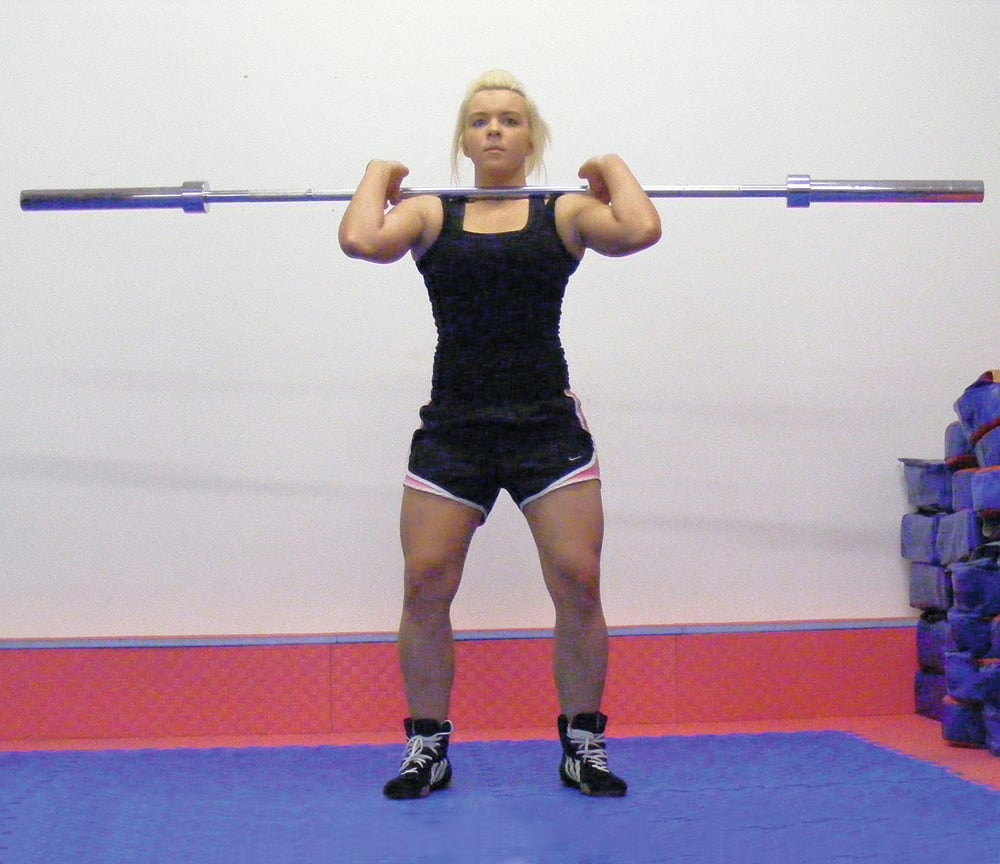
Hang clean
From the hang, jump and shrug, bend your legs slightly and rotate your elbows around
and up, then catch in the front-squat position.
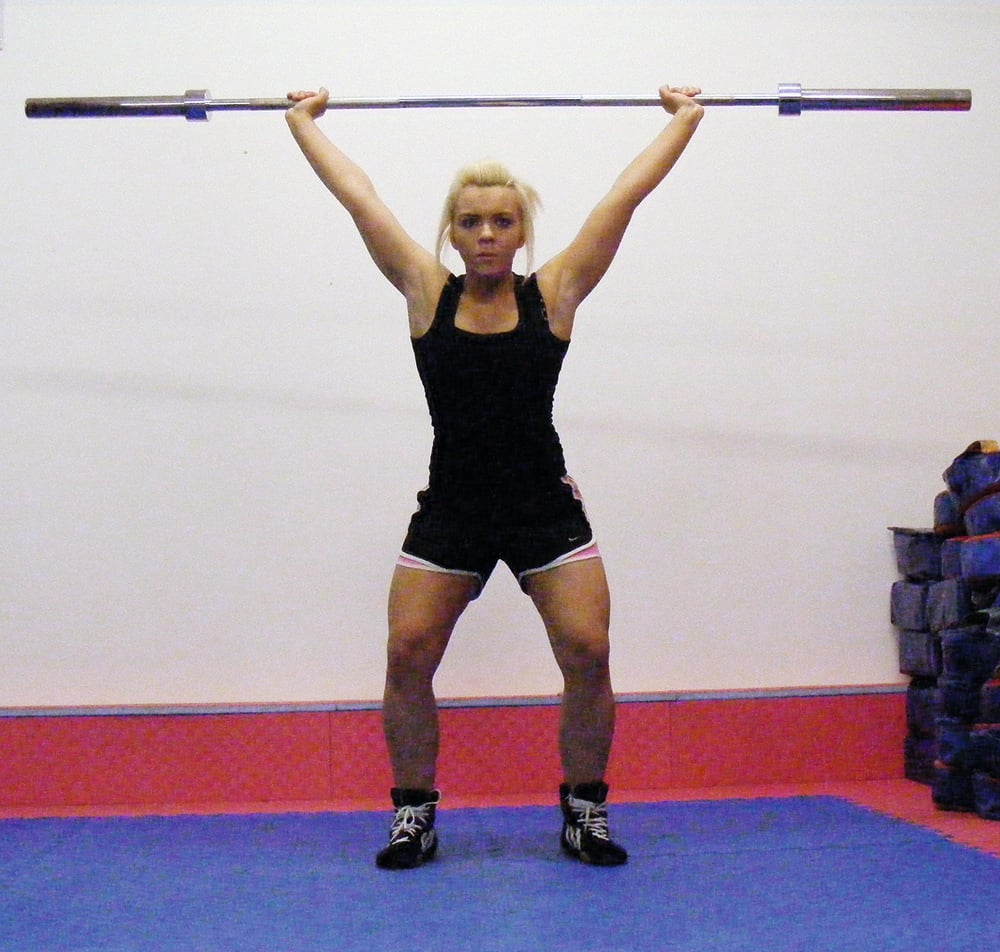
Hang snatch
From standing, slide the bar into the hang, jump and shrug, bend the legs lightly and catch the bar in the overhead squat position.
And you’re ready to Olympic lift
So what sets and reps schemes should you use? My advice to those new to Olympic lifting: don’t worry about it. Pick up an empty barbell and spend ages excelling at the lifts above. Use that as a warm-up or recovery session for a few weeks. When you can do them in your sleep, add some weight or move on to the next stage. After a few weeks you’ll be completely confident with the movements and can start to add some respectable weight to the bar. Remember it’s bar speed we’re after in the Olympic lifts so try not to get carried away...
Paul McVeigh is a sports scientist and a professional fighter ranked as the number one bantamweight in Europe. He trains fighters out of The Griphouse gym in Glasgow, Scotland. Get in touch with Paul via [email protected].










